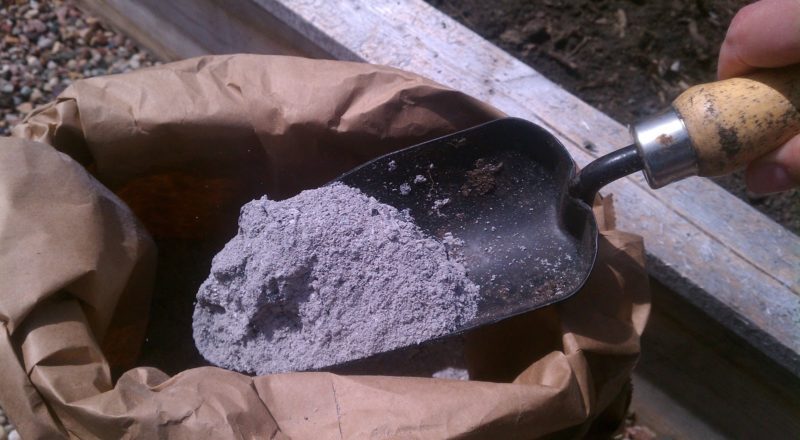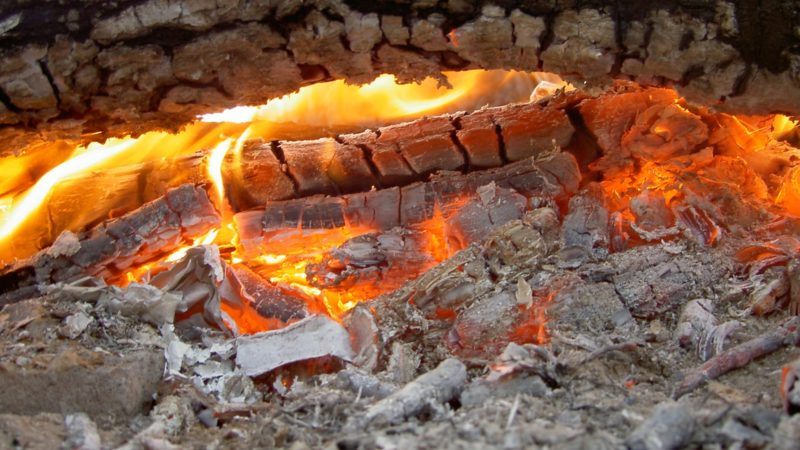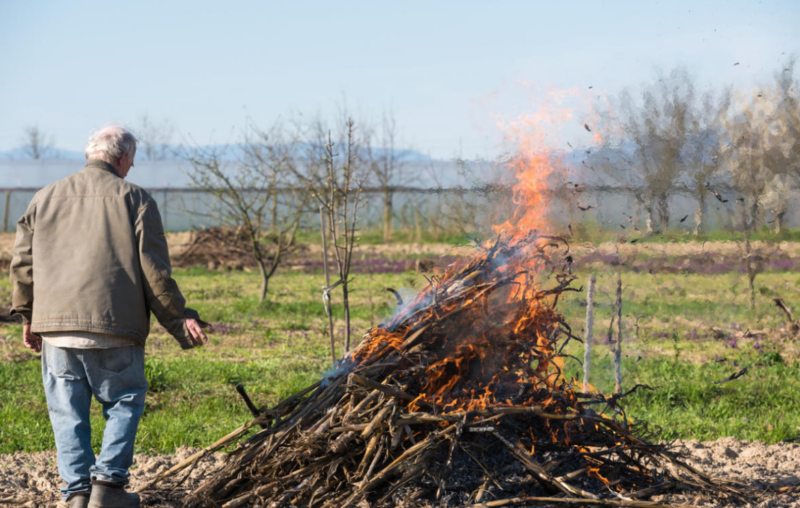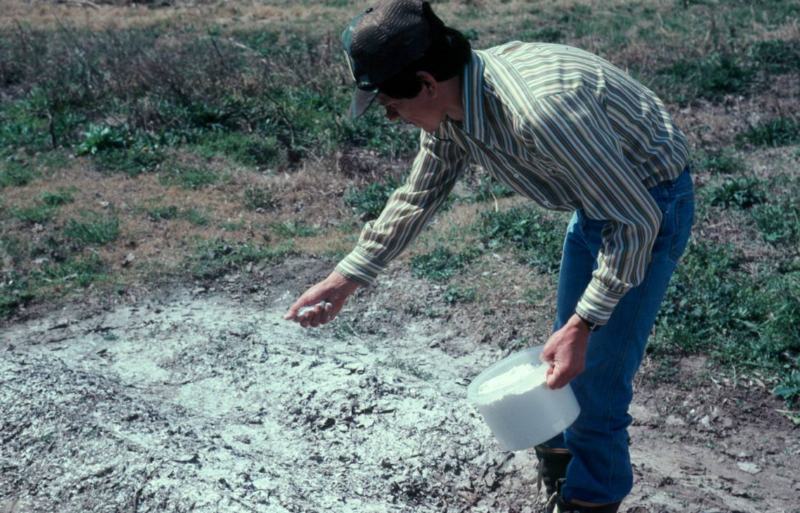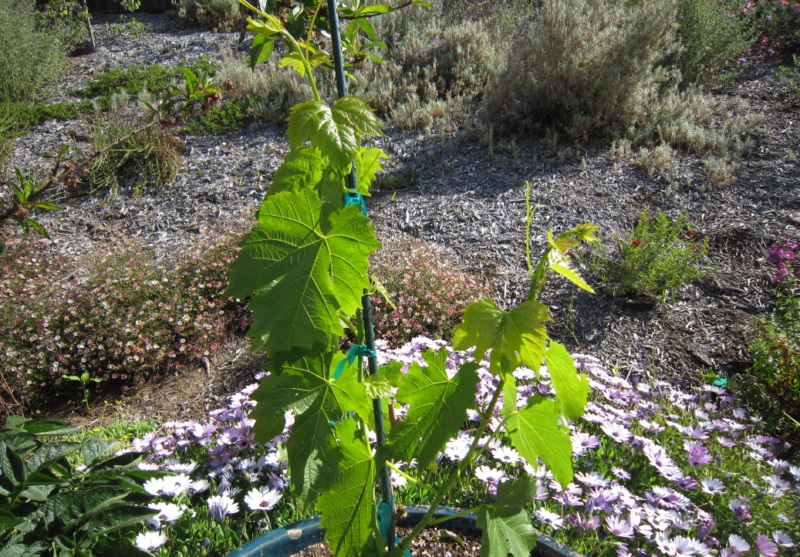Ash has been used by gardeners since time immemorial. It makes wonderful baits for the development of cultural plantings, as well as a powerful tool to protect against pests. As part of the publication, we will tell you how to use ash as a fertilizer for garden and indoor plants, in which cases you can’t do this, how to use this product to get rid of harmful insects in plants.
Material Content:
- 1 The composition and useful properties of ash for plants
- 2 How to get mineral fertilizer
- 3 Recipes for the preparation of mortar and infusion from ash
- 4 Application for feeding garden and indoor plants
- 5 Fertilizer against diseases, pests
- 6 In which cases it is not necessary to use ash
- 7 How can I replace dressing
The composition and useful properties of ash for plants
It is impossible to describe the exact composition of the ash, because it depends on the plant, which has become the material for the formation of ash, on its age and place of growth.
But still, the overall picture of the composition can be described.
The chemical constituents of the ash depend on the starting material, and these can be:
- Deciduous plants with thick stems (buckwheat, sunflower), wood. As a rule, the ashes from these plants contain a lot of potassium and calcium, which is not only fertilizing, but also salvation for acidified soil. Wood ash is used to restore the pH of the soil.
- Coniferous wood, in addition to the substances prescribed above, is rich in phosphorus.
- Peat ash has no such value as wood ash, and is rarely used for the garden, unlike the one mentioned. But still, ashes of peat are used in the garden as an additive to reduce the acidity of the soil.
- Coal ash, like peat, is not of great value for cultural plantings.Ash from burning coal is useful to all gardeners who have an alkaline area: with this ash, you can acidify the soil.
- Ashes from burning tops and foliage is used as an independent fertilizer for plants and as a mineral additive to compost.
- It is worth saying about the ashes from smoked cigarettes: for the most part it is used as an assistant in the fight against small midges and diseases of fungal origin. Since this material is very difficult to obtain in large quantities, it is mostly used in growing potted plants.
Even materials affected by fungus and infections can be used on site after incineration.
Ash is collected after it has completely cooled. A wet product does not have useful characteristics, so it must be stored in a place not accessible to moisture.
Characteristics of the substance:
- improves the structure of the earth, making it more loose and moisture-consuming;
- on heavy soil, fruiting increases;
- organic matter with ash decomposes faster, and ash is used as a separate layer on compost heaps;
- soil with ash is better saturated with oxygen;
- positive soil qualities during ash application last for more than 2 years.
As already mentioned above, the chemical composition of the ash varies.
But in any type of ash, the following substances are contained (we will not write the ratio per 100 g, since the amount of substances in each ash is different):
- boron;
- manganese;
- molybdenum;
- phosphorus;
- calcium (in various compounds: sulfate / carbonate / chloride / silicate);
- potassium (orthophosphate);
- iron;
- sodium;
- sulfur.
The useful properties of ash are obvious, so I want to write briefly about the positive effect on the main crops of ash components on plants.
- Calcium carbonate is most useful for such plantings as tomatoes, nightshade, cucumbers, flowering plants. This element allows the body of the plant to grow faster, has a positive effect on flowering (speed of development of flowers, their size).
- Calcium silicate helps the plant absorb vitamins faster. Root crops are especially in need of calcium, so, for example, onions are especially acute for a deficiency of this substance, the onion begins to delaminate and dry.
- Calcium sulfate is important for increasing green mass. It is necessary for growing seedlings, herbs (parsley, dill, and so on).
- Calcium chloride affects the absorption of nutrients, the plant needs for photosynthesis. Another advantage of this element is an increase in winter hardiness in shrubs and trees, so when using ash, you can grow southern fruits with great success in regions with colder winters. Calcium chloride prevents the development of pathogens in the soil, so ash helps so well in the fight against pests and diseases.
- Rock salt is an essential component for healthy crop growth. In particular, it is important for plants that cannot tolerate drought, as it retains moisture.
- Potassium increases winter hardiness, it is necessary to neutralize alkali in the soil, ammonia in the roots of plants. Also, the substance regulates the water balance in the body of the plant.
- Magnesium is an energetic of a plant, improves metabolism, accelerates growth, and improves the quality of fruits.
How to get mineral fertilizer
Any gardener can independently receive free mineral fertilizer for use, for this it is enough to burn any of the raw materials prescribed above. Especially a lot of ash is obtained after harvesting on the site in the spring and autumn. Collect dry and frost-bitten tree branches, tree bark and wood (firewood, sawn trunks of bushes and trees), grass, tops from plants (as mentioned above, you can even use diseased plants), peat, fallen leaves - all this “garbage” will turn out excellent fertilizer!
A bonfire needs to be built in a place that is located within 5-10 meters from the nearest trees and bushes.
Some gardeners, in the absence of special areas for organizing a fire, make fire on a potato field after harvesting. But this is not recommended, because you can not expose the soil to too high temperatures, and even after the fire, the soil is compacted.
To make it easier to collect the ash, lay the raw materials on a metal sheet, then set fire. Do not use combustible or lubricating materials to ignite!
A bonfire is planted in calm weather to protect trees and buildings from flying sparks. Prepare a poker or other object with which you can move the fire, turn the material over. Be sure to burn everything that was put into the fire, because among the raw materials infected plants can get caught in the fungi, and this will not bring any benefit to the culture on the site.
Ashes are collected approximately 2 days after burning the raw materials: during this time, the ash will completely cool. But if there is a risk of rain, then pack up still hot fertilizer in metal containers, put it in a place where there is no moisture, but taking into account that there is no risk of fire!
It is necessary to store the ashes in a dry place, in closed containers, from which it will be convenient to take and use it for fertilizer.
Recipes for the preparation of mortar and infusion from ash
Before preparing top dressing, the ash must be crushed, because it is much more convenient to work with a fine fraction. We offer recipes for dry and wet feeding, decoction of ash.
Dry top dressing:
- Grind the ash; there is no need to sift.
- Collect the required amount of material, sprinkle on the ground.
- The soil needs to be dug up, but you can leave the top layer as mulch. Under the influence of water, nutrients from the ashes will gradually penetrate the soil, saturating it.
It is important to observe the proportions of ash when applied as top dressing:
- Sandy loam soil - 100-200 g per 1 sq. Km. m
- Loamy soil - 200 - 800 g per square meter.
Wet fertilizer is used for irrigation, and for foliar application.
Preparing the solution is simple:
- In 10 l of cold water, mix 100-200 g of ash.
- Insist 7 days.
Apply.
Uterine infusion:
- In 10 l of liquid, add 1 kg of ash. Cook for 20 minutes. Dilute each liter of broth in 10 liters of water.
- Cool and apply without insisting.
Fertilizer for the garden and potted plants according to any recipe is strong, cheap (even free). The feeding rules will be described below.
Application for feeding garden and indoor plants
Each representative of the flora needs nutrition for health and good growth, fruiting. No matter how rich the soil, from time to time it needs to be enriched additionally, because the composition does not contain so many trace elements needed by plants.
Ash is a safe top dressing, but you still need to use it correctly.
We describe examples of the application of ash in the soil on the most popular plants among gardeners.
Cucumbers simply cannot grow well without top dressing. The lack of trace elements leads to empty flowers, slow fruit setting, as well as poor growth. Ash can be used in one of the ways described above. If you chose an infusion or decoction on ash, then under one bush you need to make 0.5 l of liquid every other day.
Onions are prone to root rot, and a lack of nutrients affects the size of the head - it can even exfoliate. To prevent this from happening, you need to make top dressing from ash.
There are three ways to do this:
- Water with a solution of ash, but a maximum of three times for the entire season.
- Pour ash on the ground, dig.
- Make an additional furrow near the row with onions, add ash to it, sprinkle with soil.
Tomatoes are very sensitive to a lack of potassium and magnesium. When fertilizing with ash, after a few days you will notice how quickly the bushes began to grow.
Thanks to the ash, the taste of tomatoes improves. Tomatoes become more juicy and sweet, and all thanks to the potassium, which is part of the ash, which, entering a number of chemical processes, is involved in the formation of sucrose.
You can feed tomatoes in one of the ways:
- Pip a glass of ash per hole when planting bushes in the soil.
- Water the tomatoes twice a week with infusion or a decoction of ash.
- Sprinkle ashes near-tree plots of land before watering.
Grapes It is ideal to feed this culture with ash obtained by burning old vines and vine leaves, but woody, leafy ash is also suitable. Prepare the solution, as described in the previous paragraph (at least infusion, at least a decoction), and spray them with leaves in the evening. To keep water droplets in a larger volume on the plant, add chips from laundry soap to the solution (this is also an additional protection against pests).
The use of ash for feeding other garden plants can be any, water the beds with a solution once a week or add to the soil before digging.
Indoor plants are also gratefully responding to the feeding of ash. Ashes can be mixed with soil during plant transplants. The proportions are observed necessarily and look like this: per 1 kg of soil 2 tbsp. l ashes.
There is still a good option for feeding indoor plants with ash - with tea leaves.
How to apply:
- Brew tea according to the usual pattern. The next day, squeeze the tea leaves, mix with ash in a ratio of 1/1.
- Put the composition into the ground when transplanting or lay a layer on the soil in a pot.
You can water the plants in pots with a solution of ash. During the growing season, watering is done once every two weeks, in winter - once a month.
Fertilizer against diseases, pests
Everyone who has a garden plot understands how difficult it is to deal with harmful insects and plant diseases. The ashes help to overcome aphids, slugs, nematodes, wireworms, midges and other pests. Ashes are also excellent in the prevention of fungal diseases. There are several recipes for using the product.
Sprinkle ash around the roots, foliage. To keep the ash better on the plant, you can pre-spray the leaves with water. This method helps against slugs, snails and aphids.
If the culture was attacked by cruciferous midges, aphids, or root rot appeared, then the following solution will help:
- A liter of boiling water pour 300 g of ash. Boil for 10 minutes, then drain the broth into a 12 liter bucket. Add 10 liters of water, 40 g of laundry soap.
- With this solution in the evening, treat the foliage and trunk, pour the remains under the root.
Cabbage and onion midges, aphids, as well as a disease called the “black leg” are common problems of a gardener. Plants are then dusted with powder from wood and tobacco ash.
It is possible to water, process dry ash with absolutely all plantings. Thus, you will not only save plants from attacks of diseases and pests, but also create good growth conditions, because ash is the best fertilizer tested over the years!
In which cases it is not necessary to use ash
It is not always possible to use ash as a fertilizer.
Contraindications are the following points:
- the soil is too alkaline;
- plants need acid soil;
- ash of unknown origin (if you take ash from other people, you can not be sure that there are no harmful compounds that appear when plastic is burnt or when a fire is made with harmful combustible substances);
- it is impossible to add ash together, before and after top dressing with nitrogen fertilizers (the interval between the application of these fertilizers should be at least 3 weeks);
- there is an excess of potassium in the soil - this can be expressed as follows: the flesh of apples and brown pears, foliage falls prematurely in plants;
- an excess of calcium in the soil - this is indicated by signs: white spots (inter-vein chlorosis) on the foliage, shoots on the main stem of tomatoes die.
Do not overdo it with fertilizer: its surplus harms plants.
As they say, it’s better not to overfill the cultural plantings than to overfeed.
How can I replace dressing
If you do not have ash, and there is nothing to get it from, then use alternative options.
There is nothing irreplaceable, everything has an analogue!
- Instead of ashes, superphosphate and potassium sulfate are used for top dressing. You need to add these dressings separately, and they are sold in any store specialized for summer residents.
- To deoxidize the soil and to control pests, replace the ash with slaked lime or dolomite flour. Apply these components to the soil when digging and spray on plants. You can not water with lime!
If you have a garden or vegetable garden, do not refuse to use ash, if there are no contraindications. Although it’s free, it’s a very high-quality fertilizer that has been used for growing various cultivated plants for many centuries. Getting ash is simple, everyone can do it. Use our guidelines for using ash and you will see that the harvest will be richer!


